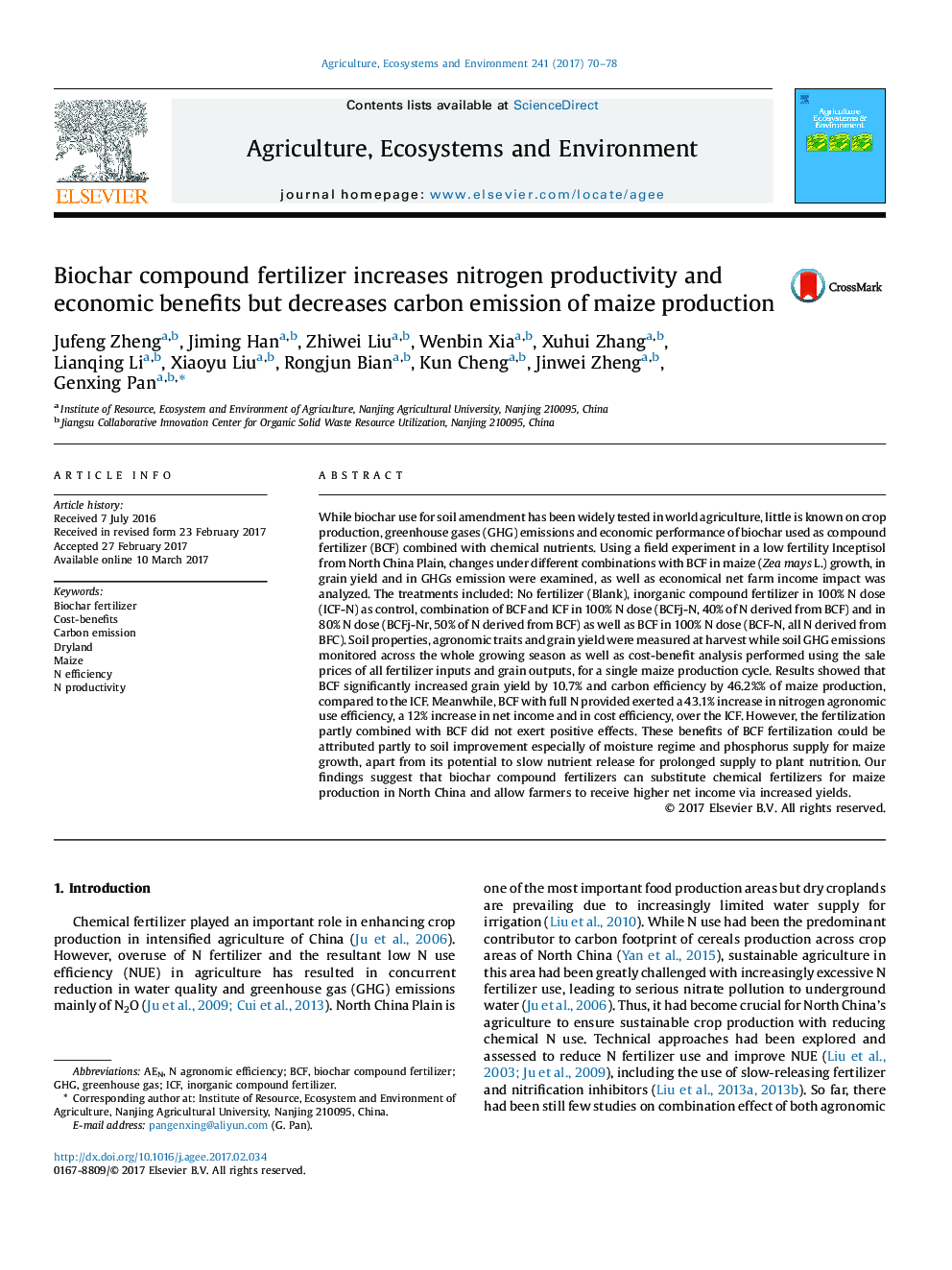| Article ID | Journal | Published Year | Pages | File Type |
|---|---|---|---|---|
| 5538258 | Agriculture, Ecosystems & Environment | 2017 | 9 Pages |
Abstract
While biochar use for soil amendment has been widely tested in world agriculture, little is known on crop production, greenhouse gases (GHG) emissions and economic performance of biochar used as compound fertilizer (BCF) combined with chemical nutrients. Using a field experiment in a low fertility Inceptisol from North China Plain, changes under different combinations with BCF in maize (Zea mays L.) growth, in grain yield and in GHGs emission were examined, as well as economical net farm income impact was analyzed. The treatments included: No fertilizer (Blank), inorganic compound fertilizer in 100% N dose (ICF-N) as control, combination of BCF and ICF in 100% N dose (BCFj-N, 40% of N derived from BCF) and in 80% N dose (BCFj-Nr, 50% of N derived from BCF) as well as BCF in 100% N dose (BCF-N, all N derived from BFC). Soil properties, agronomic traits and grain yield were measured at harvest while soil GHG emissions monitored across the whole growing season as well as cost-benefit analysis performed using the sale prices of all fertilizer inputs and grain outputs, for a single maize production cycle. Results showed that BCF significantly increased grain yield by 10.7% and carbon efficiency by 46.2%% of maize production, compared to the ICF. Meanwhile, BCF with full N provided exerted a 43.1% increase in nitrogen agronomic use efficiency, a 12% increase in net income and in cost efficiency, over the ICF. However, the fertilization partly combined with BCF did not exert positive effects. These benefits of BCF fertilization could be attributed partly to soil improvement especially of moisture regime and phosphorus supply for maize growth, apart from its potential to slow nutrient release for prolonged supply to plant nutrition. Our findings suggest that biochar compound fertilizers can substitute chemical fertilizers for maize production in North China and allow farmers to receive higher net income via increased yields.
Keywords
Related Topics
Life Sciences
Agricultural and Biological Sciences
Agronomy and Crop Science
Authors
Jufeng Zheng, Jiming Han, Zhiwei Liu, Wenbin Xia, Xuhui Zhang, Lianqing Li, Xiaoyu Liu, Rongjun Bian, Kun Cheng, Jinwei Zheng, Genxing Pan,
